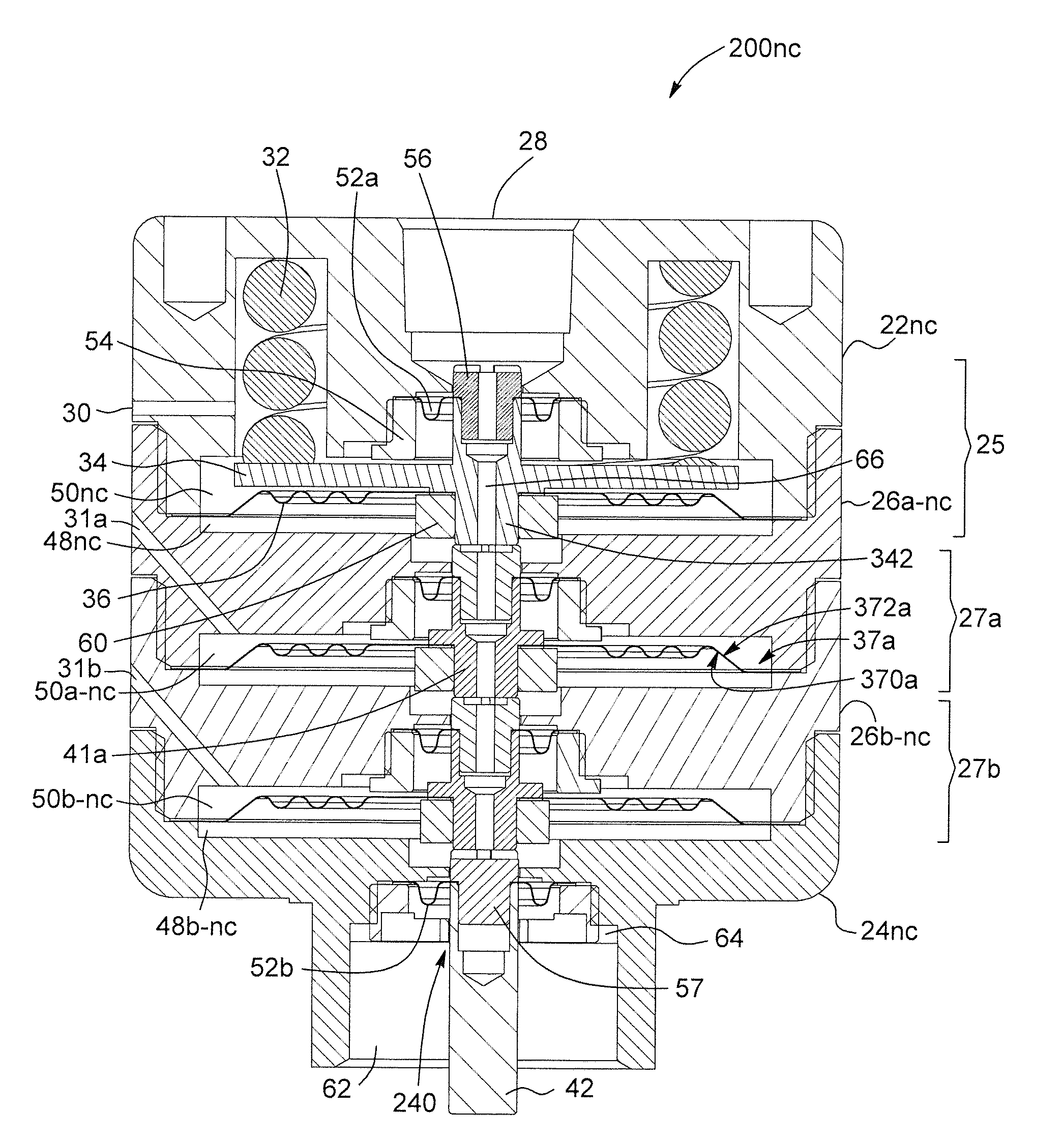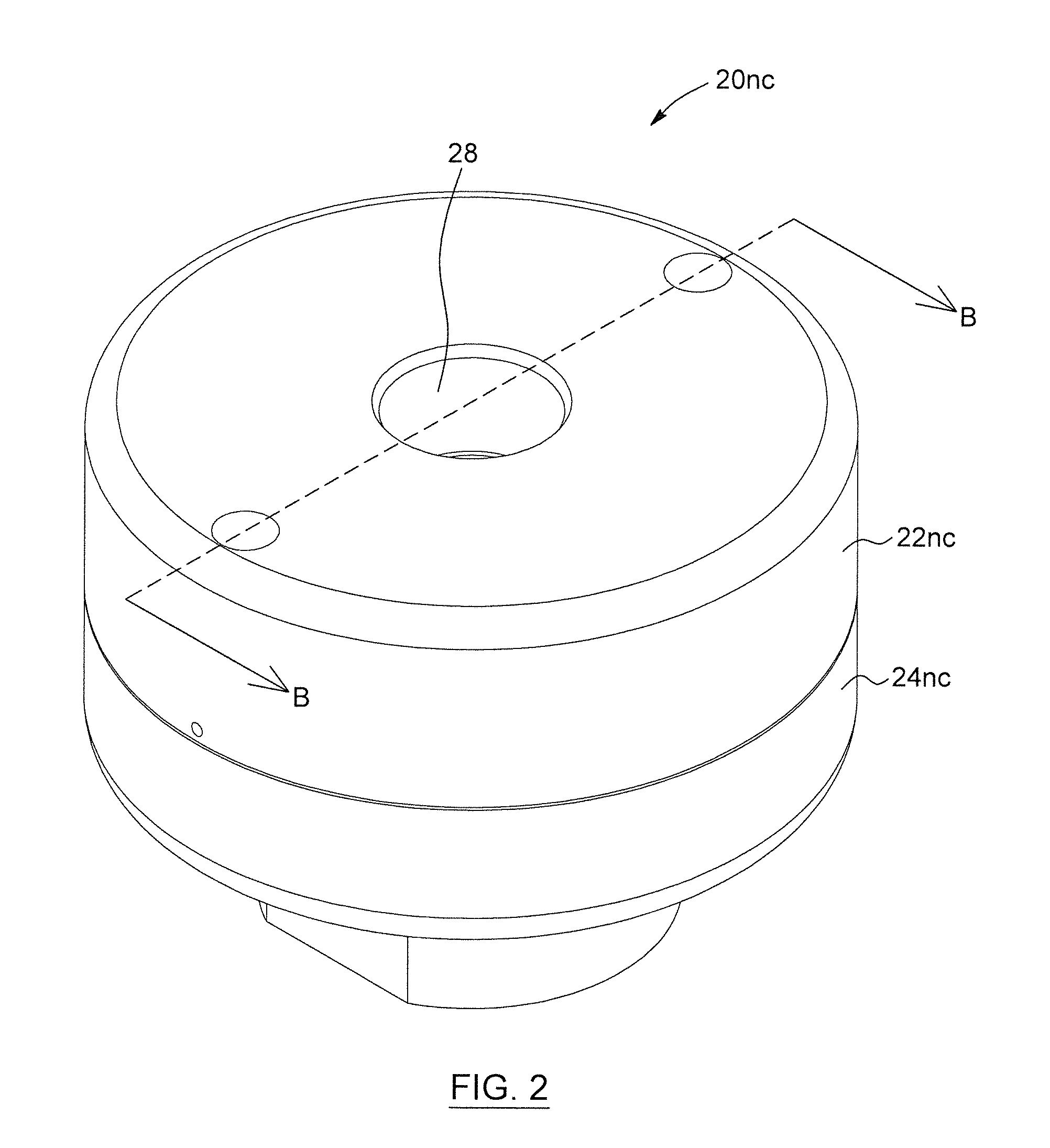Actuator
a technology of actuators and actuators, applied in the field of pneumatic actuators, can solve the problems of increasing the friction between the seal and the dynamic seal, impairing the movement of the piston, and sticky and brittle over time, and achieve the effect of easy customization of the actuating mechanism
- Summary
- Abstract
- Description
- Claims
- Application Information
AI Technical Summary
Benefits of technology
Problems solved by technology
Method used
Image
Examples
Embodiment Construction
[0061]In the following description, similar features in the drawings have been given similar reference numerals. To preserve the clarity of the drawings, some references numerals have been omitted, if they were already identified in a preceding figure.
[0062]The embodiments described below are given by way of example only and the various characteristics and particularities thereof should not be considered limitative to the scope of the present invention It will be appreciated that positional descriptions such as “top”, “bottom” and the like should, unless otherwise indicated, be taken in the context of the figures and should not be considered limiting.
[0063]With reference to FIG. 2, an actuator 20nc for actuating the plunger of valve is shown. The actuator 20nc includes a first cap 22nc and a second cap 24nc, a main inlet 28 and a main outlet 30. The inlet 28 and outlet 30 are ports through which fluid can be forced or drawn. The main inlet 28 is provided in the top cap 22nc. The fir...
PUM
 Login to View More
Login to View More Abstract
Description
Claims
Application Information
 Login to View More
Login to View More - R&D
- Intellectual Property
- Life Sciences
- Materials
- Tech Scout
- Unparalleled Data Quality
- Higher Quality Content
- 60% Fewer Hallucinations
Browse by: Latest US Patents, China's latest patents, Technical Efficacy Thesaurus, Application Domain, Technology Topic, Popular Technical Reports.
© 2025 PatSnap. All rights reserved.Legal|Privacy policy|Modern Slavery Act Transparency Statement|Sitemap|About US| Contact US: help@patsnap.com



